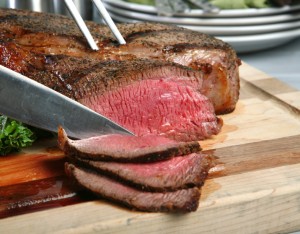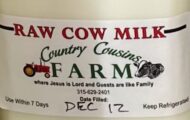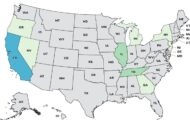Representative Rosa DeLauro (D-CT) wrote to Shaun Donovan, director of the Office of Management and Budget this week, urging him to finalize the new USDA rule on mechanically tenderized beef products. There may be a delay implementing this critical rule if it is not finalized by December 31, 2014.
 Mechanically tenderized beef has been pierced with blades or needles to break up connective tissue so the meat is more tender. Unfortunately, this process pushes pathogenic bacteria present on the surface of the cut into the interior. Then, if the meat is cooked less than well-done, those bacteria survive in the center of the product, and can make someone sick.
Mechanically tenderized beef has been pierced with blades or needles to break up connective tissue so the meat is more tender. Unfortunately, this process pushes pathogenic bacteria present on the surface of the cut into the interior. Then, if the meat is cooked less than well-done, those bacteria survive in the center of the product, and can make someone sick.
A 2008 study by USDA states that about 50,000,000 pounds of this product are sold every month without labels warning consumers of the possible dangers. Mechanically tenderized beef caused at least five E. coli O157:H7 outbreaks in the U.S. between 2003 and 2009. And between 2009 and 2013, there were 75 outbreaks associated with beef; 35% of those were caused by E. coli O157:H7. But less than one-quarter of federally inspected beef facilities that produce this mechanically tenderized product have controls in place that ensure consumers know how to cook it.
Ms. DeLauro says in the letter, “Without accurate and complete labels on these products, we are not providing consumers with the information they truly need to follow safe preparation practices.” It has now been over a year since the proposed rule was published.
Attorney Fred Pritzker, who has represented people sickened by this type of product, agrees. He states, “meat companies and restaurants don’t warn consumers about mechanical tenderization and the dangers that go with it. They don’t want consumers to be able to make informed choices because they are afraid it will hurt sales.”




